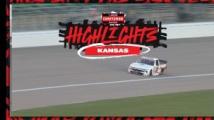Chevrolet Corvette documentary: The story of designing the mid-engine C8
Chevrolet Corvette documentary: The story of designing the mid-engine C8
Video Transcript
[MUSIC PLAYING]
TOM PETERS: I remember stepping off the bus with my buddies.
TRISTAN MURPHY: And I can remember being very young and being with my father and just being awestruck.
TOM PETERS: I looked around, and here's this silver spaceship driving in.
TRISTAN MURPHY: Among this whole sea of cars on the road, here was this thing coming down the road that just looked like nothing else.
BRETT GOLLIFF: The one that sticks out in my head would have been the C4 Grand Sport.
VLAD KAPITONOV: And it was a white C4 convertible.
TRISTAN MURPHY: It was a C5 Corvette bright yellow.
BRETT GOLLIFF: It's this awe inspiring vehicle, it's an attainable vehicle, but it's also something that is born out of pure function. And quite frankly, by the time you get to eight, it's the full embodiment of what that is.
[MUSIC PLAYING]
TOM PETERS: Over the course of my career, I've been involved with Corvette on one level or another, probably from my first day of becoming part of the Corvette team all the way to the current 2020 Stingray. I became the director of design for Corvette for the sixth generation. And during the development of each of those, there were probably a few significant key design elements. Those are the heritage of Corvette, one of those elements throughout the years, whether it's proportion, surface, graphics that you can identify and then distill down to their basic elements in a timeless way.
Like for instance, the fender shapes, the profile, the proportion really is big where you have this canopy on a lower fuselage like a jet fighter. That's probably the second element is aircraft have been inspirational. And why is that? Because they're usually high performance, they're purpose driven, there's a singular mission for them. And it relates to Corvette beautifully.
Another aspect is racing. Racing has I'll say a huge influence on Corvette, and particular obviously this last 2020 Stingray is a culmination of all that experience. And the character that you see of the car, the design is influenced by the functional aspects of the race vehicles.
BRETT GOLLIFF: We kind of had that innate history of what's coming from over the past two generations for sure and now three. My point is is that you see this level of function continue to grow and grow. And then you get back into the racing program at the same time. And you see that where the track starts to become the inspiration for the regular man.
And then I think that's always been a beautiful part of our Corvette is that we're going to the track with this, we're doing our best to win. Obviously, it's a shift in where we've placed a motor. But the reality is is what caused that shift was what you saw grow from four, to five, to six, to seven. We peaked out where we were at. And it was time to move on.
TOM PETERS: And I remember clearly Tadge Juechter the chief engineer saying, we've optimized this platform as much as we possibly can. Now it's time to go to mid engine.
VLAD KAPITONOV: The move of a Corvette from front to mid engine, you could call it a risk. But for us inside of Design Center, it was something that's always been beneath the surface. And it's something that just never quite made it out of the gate. And since I've worked at GM, there were mid-engine Corvettes around. For the past 60 years since Zora Arkus-Duntov was trying to make a mid-engine Corvette, there were many, many iterations.
TOM PETERS: And we've always researched, and experimented, and developed concepts around mid-engine proportion. So it's almost like no wine before its time because it has been tried for years.
KIRK BENNION: It'd probably be in a 2011-ish time frame where we started talking about the mid-engine again. We started having meetings as to what we would do with the package, what would we need for content. And we started scripting what we'd like the mid-engine car to do at that time.
VLAD KAPITONOV: As a designer, you don't often get to work on something that's new essentially from ground up. And this car is new from ground up.
KIRK BENNION: We had three full sized models, clay models, with a different theme on each side. We probably had at least 12 scale models. A scale model, we would develop for two weeks and decide was there merit to the design? If it didn't have merit, then we would just drop that scale. So we were constantly churning and reworking scales as we were looking for a lot of themes in that.
TRISTAN MURPHY: By moving to the mid-engine layout, what that enabled as far as from a performance figures, as far as interior layout and visibility, going from the C7 Corvette to the C8 seventh generation Corvette had kind of that arc of driver controls in front of you. And now we were taking it and literally kind of turning it on its side and making it really this three dimensional thing that you were sitting in.
The difference of how extreme, how much lower the IP is, how much richer all the materials are, how much more sculptural and three-dimensional the interior space is, I think that's going to be a really big take away and something that a lot of people aren't going to be expecting when they get inside of it.
If you jump from a current Corvette C7 to the C8, the experience that the customer's going to get, when you start adding that all together, it's hard to look at going to a mid-engine configuration as a risk. It's going to take all those things that the front engine car did and just take them to the next level.
[MUSIC PLAYING]
BRETT GOLLIFF: So if I have to sum the whole thing up, I'm most proud that we are able to achieve everything that we set out to do. But what I actually think the greatest success was is that as you get in it and you use it, you don't really notice that you're doing something different. It feels intuitive. It feels like you're a part of the car. It feels like the right decision.
TRISTAN MURPHY: It's delivering something that would usually be almost seen as something so exotic or unattainable. It makes it where this experience can be yours. It makes it to a much higher volume of people that can actually have something and get behind the wheel and drive something that's going to feel completely like forbidden fruit. It's like, oh, you would have never thought you could get a car like that.
TOM PETERS: Although we all feel a sense of accomplishment for finally this was the right time to introduce, to work on and introduce, a mid-engine Corvette. But I'm here to tell you that that is just the tip of the iceberg. Just imagine where it can go from this point. This is just the beginning.
[MUSIC PLAYING]








